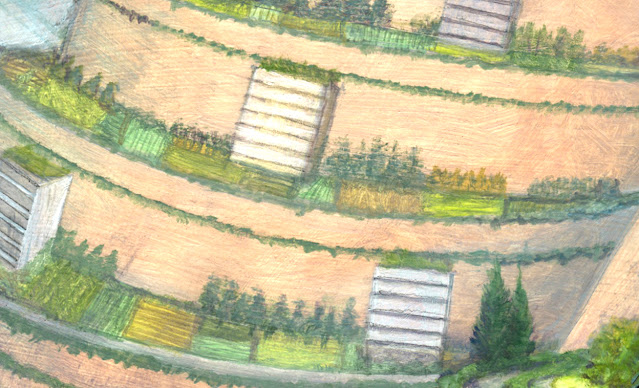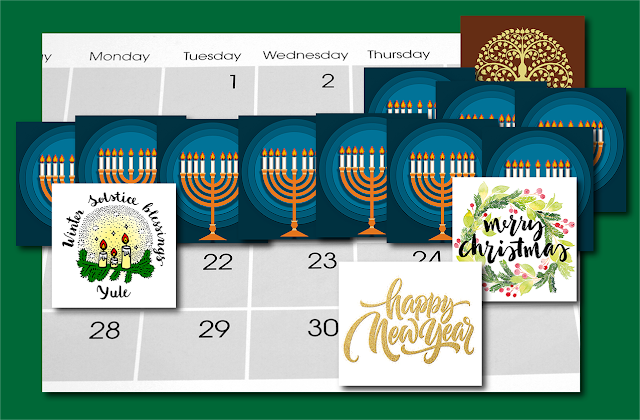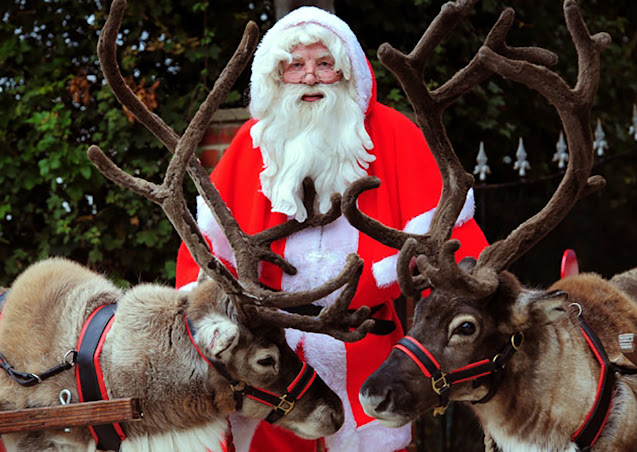Since our prehistory, humans have focused on creating a calendar, then using it to keep time. We’ve based calendars on the seasons, the sun, and the moon. We’ve scratched symbols into clay, bone or stone, dug sequences of pits, erected poles, or even dragged enormous stones for fabulous distances, all to get a handle on “WHEN are we?”
But creating a calendar that’s accurate over a long period of time is a harder thing to do on Earth than one might think it should be. That’s because a year—one revolution of the Earth around the sun—takes approximately 365.242189 days.
That pesky fraction of a day has been driving humans to distraction (and to doing higher math) for millennia. We’ve created intercalary days, weeks, or even months to periodically adjust our calendars and keep them accurate. (It’s enough to give one an embolism—sorry; bad joke: use the hyperlink to look at definitions 2 and 3).
How long is a year—in space?
Of course, Earth is in space, so that’s a silly question. A year is however long it takes to orbit the local star once. That’s different for every planet, planetoid, asteroid, moon, or other space-based object, because all orbit on different paths.
Including Rana Station. At least, up to a point. But when you’re creating a calendar for an exoplanet in a different system, a variety of rules may apply.
I’m certainly not the only sf writer to approach the problem of if—and if so, what—calendar to use in their stories. Probably one of the best-known science fictional calendars is Star Trek’s “Stardate” system.
 |
| TNG episode screen-capture via Memory Alpha Fandom. |
It stands to reason that if you use the “Captain’s Log” as a framing device, you need a login time/date for it to feel authentic. The Stardate sounds futuristic, but what do those numbers really mean? Turns out they have less to do with futuristic dates than they do with episodes and seasons of the show.
Problems to solve, for Rana Station
I haven’t specified an exact future century in which my XK9 stories are set, or in what existing star system. In a time-honored sfnal tradition, I chose to set it “far away, in a different time,” rather than get too specific. Sometimes I tell people it’s set in the “Twenty-Fourth-and-a-Half Century!!”
I’m more interested in telling my chosen stories than I am in charting a detailed and inevitably-wrong predictive “history” of future umpty-centuries. Who knows what technologies will have been developed, lost, and then recreated (or not) by then? In a multiverse, does it really matter?
But when we get down to more immediate times and dates, I needed to go into more detail. Year-dates within the Chayko System all begin from the time humans arrived in-system, after they were granted permission by the Alliance to claim the planet. Rana Stationers also often speak of the Ranan year (0-94, as of The Other Side of Fear), meaning how many (Chaykoan) years people have lived there. There are reference sources they can use when they need to cite Alliance-wide dates or Earth dates.
But, as I discussed in last week’s post, Rana Stationers hail from many different Earth origins, and they’ve preserved many of their heritage customs, including religions and holidays.
Celebrating Earth holidays outside the Solar system
Creating a calendar is actually not that hard, if it’s for a fictional time and place “somewhere out there.” And if you aren’t trying to connect it in any way with Earth. Perhaps this is one reason why so many sf writers destroy our Earth in the “history” leading up to their story.
It’s also pretty easy to see how many holidays of Earth origin could be adapted to local conditions on an exoplanet. It’s entirely likely that the new planet would have seasons, and shorter or longer periods of daylight throughout the course of its year. Holidays based on solstices and equinoxes? No problem!
Lunar calendars would be more of a problem, though. Islam, Theravada Buddhism, and other world religions base their holiday timing on phases and cycles of Earth’s moon. But what if your planet has no moon? Or if it has several? What if you live on a moon?
 |
| At L, a line of dots may be a 15,000-year-old lunar calendar inside Lascaux cavern in France. At R, a map shows locations of three caves filled with stunning prehistoric art: Altamira, Lascaux, and Peche Merle. (BBC News/Khan Academy) |
Chayko, for instance, is the human-inhabited planet in my XK9 stories. It has two small moons that used to be part of its planetary mass. They orbit closer to the planet than our Earth’s moon, and exert complex influences on Chaykoan oceans, ecosystems, and organisms that only sometimes resemble the effect of our moon on Earth.
Problems timing Earth holidays on Rana Station
Creating a calendar for naturally-occurring planetary bodies and their moons is one thing. What about a space station such as Rana? No moons. Banks of computerized mirrors adjust continually to reflect light from the system’s star into the sky-windows, filtered and directed to provide an optimal light spectrum for crop growth. On-Station, there are no moving shadows to contend with, as there are on Earth, no daily “rotation of the sun” (although the habitat wheels rotate, people can’t really see that from inside).
It’s always “high noon” on Rana Station, except for periods when the light is dimmed to simulate dusk, dawn, or full-on night. My illustrator friends Jody A. Lee and Lucy A. Synk have both complained about this. They’re right: Light and shadow patterns at noon are boring. They’re also unhelpful for creating 3-D visual effects.
But they’re great for delivering consistent light to growing crops. Days on Rana Station are always the same length. The temperature range is always optimal for a variety of agriculture. It’s not exactly “Camelot,” but the effect is something like living in a perpetually-ideal subtropical zone.
 |
| Detail from artwork ©2020 by Jody A. Lee. |
Planet Chayko is only 23 hours away from Rana. This makes it a far more relevant context-point for Ranans than faraway Earth (two jump-points away). But Chayko has a slightly smaller mass, a slightly faster spin, and a somewhat longer orbit than Earth. No unaltered Earth calendar will work there.
Just coordinating a conference call between Rana and Chayko is hard enough! Setting any kind of Earth-relevant timing for a holiday is an exercise in number-crunching frustration. Clearly, compromises must be made.
Intercalary days to the rescue!
Planet Chayko does have seasons. It does have solstices and equinoxes. Thus, it’s possible to divide the year into twelve, fairly equal periods, named after Earth months. Yes, in the XK9 books, January, February, and all the other months we know as part of Earth’s most widely-used Gregorian Calendar have gone to space.
But the plain fact remains that a slightly faster spin and a slightly longer orbit both mean more days in the year than 365.2425 (or 365.242189, depending on your preferred approach). On Chayko (and consequently on Rana Station), every month contains 6 to 10 intercalary days not found on Earth calendars (Yes, February the 32nd is an actual date on Chayko—and therefore, on Rana Station).
 |
| We’re used to the December holidays being on similar days each year. (Digital Illustration by Jan S. Gephardt, with lots of help from 123rf stock images.) |
This means that Chaykoan Solstice and Christmas, for instance, don’t happen at the same interval as they do on Earth. In fact, Christmas, which always happens on December 25, often occurs before the Chaykoan northern hemisphere’s Winter Solstice.
Practitioners of several faiths that traditionally have varied their dates according to the lunar calendar have opted to follow the lead of Mahayana Buddhists, and celebrate formerly-variable holidays on fixed dates. Others use dates established on Earth for the closest year to the Chaykoan cycle. As you might imagine, disputes have arisen (dogmatists will be dogmatic, after all).
But somehow, they managed this business of creating a calendar. Somehow, things happen about the same time each year. And at some point, all the holidays get celebrated.
Even if it takes till December the 40th.
IMAGE CREDITS:
VIDEOS: Many thanks to National Geographic on YouTube for the clip from “Stonehenge Decoded,” and to “Jayypeezy” on YouTube for the clip of “Duck Dodgers in the 24th-and-a-Half-Century.”
PHOTOS: I’m grateful to Memory Alpha Fandom, for the screen-capture of Jean-Luc Picard's “Captain’s Log.” Thanks very much to BBC News, for the photo of the world’s oldest known lunar calendar from the Chamber of the Bulls in France’s Lascaux Cavern. The map of caves known for Paleolithic art is ©Google, via Khan Academy.
ILLUSTRATIONS: The partial glimpse of agriculture on the terraces of Starboard Hill in the Sirius River Valley is ©2020 by Jody A. Lee; all rights reserved. I created the calendar illustration using images from 123rf. Many thanks to all!








